How to Visit Quebrada de Humahuaca? 9 FAQs and Pro Tips

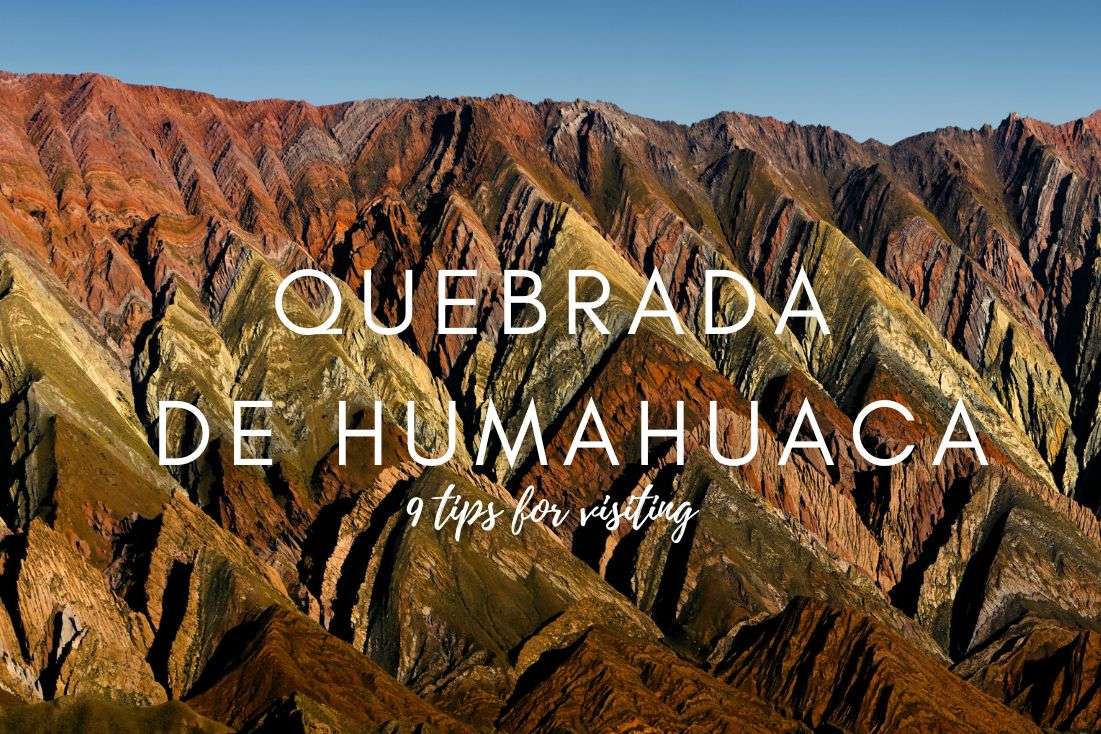
Want to peek into rich indigenous culture and history? Then you have to visit Quebrada de Humahuaca. This valley is brimming with traditional Andean villages, pivotal to the region's cultural heritage, with some dating back to pre-Columbian times. Pretty cool, huh?
We hit up Quebrada de Humahuaca during our Argentinian journey and have no regrets—if we did, I wouldn't be raving about it here. But there's more than rich culture; the valley is famed for its vibrant rock formations stretching along the mountainsides. And let me tell you, it's quite the spectacle. Absolutely gorgeous.
If my endorsement isn't enough (which baffles me), here's something to ponder: Quebrada de Humahuaca has been on the UNESCO World Heritage list since 2003, celebrated for its significant historical, cultural value, and stunning natural beauty. Yep, exactly what I've been saying.
I highly recommend not winging it and really reading up on what’s what before visiting Quebrada de Humahuaca. You wouldn't want to come back and realize you missed the best spots and dined at crummy restaurants! Check out this article for all the essential info that could come in handy for your Quebrada de Humahuaca trip.
1. What to do and see in Quebrada de Humahuaca?
Let's start with the essentials: what to visit in the valley, where to stop, and what to check out. Because, let's be honest, 155 km (96 mi) is quite a stretch.
Naturally, we drove, and here I'd recommend something with a bit of grunt, as the road can get pretty wild at times. Here are the spots we hit that you definitely shouldn't miss.
Map of the must-visit spots in Quebrada de Humahuaca. Check the details on Google Maps
A little piece of advice: If by any chance someone suggests stopping for a meal or, heaven forbid, staying overnight in Villa Termas de Reyes, let me save you the trouble and say skip it. Unfortunately, we had that idea, and I wouldn't do it again. Its glory days are long gone, everything's outdated and worn, and the service isn't going to salvage your experience either. So, it's a no-go for me.
Cerro de los Siete Colores (The Hill of Seven Colors)
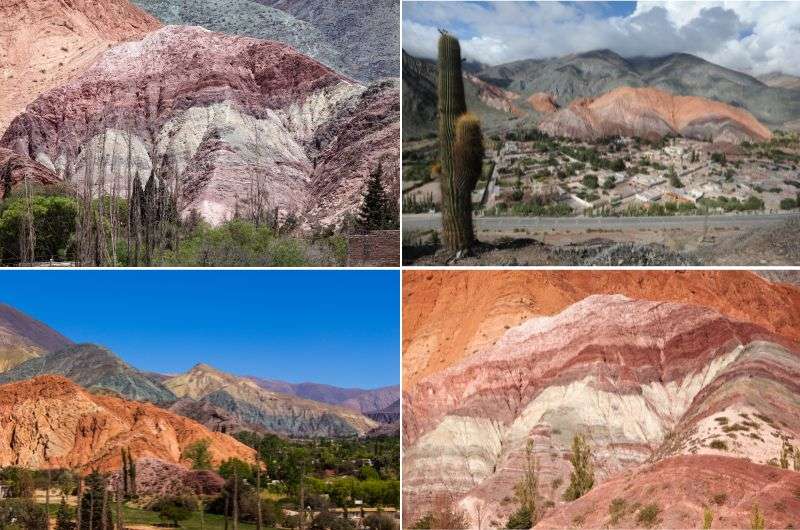
The Hill of Seven Colors
Our minor annoyance from a bad accommodation choice was quickly rectified by the view of The Hill of Seven Colors. Let's just say this hill lives up to its name, dazzling with all (7) of its hues!
The hill formed through gradual sedimentation as different colored layers accumulated. It's unbelievable what Mother Nature can create. And just wait until you see the 14 color mountains, also known as Rainbow Mountain, which is a spectacle of even more colors (see no. 5 below).
Tilcara (especially Pucará de Tilcara)
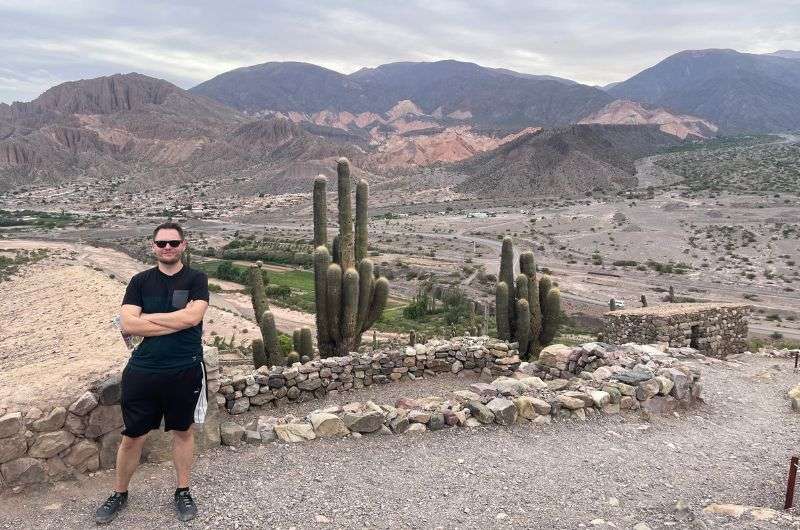
The Inca Fortress—Pucará de Tilcara
Tilcara is one of the most visited towns in Quebrada, mainly because of Pucará de Tilcara. This Inca fortress is quite beautiful and well-preserved. It once served as the provincial capital and was built around the 12th century. Strategically situated on a hill, it offers stunning views of the surroundings. Touring the entire fortress takes about half an hour to an hour.
Pucara de Tilcara feels like the biggest Inca fortress I've ever seen (excluding those I’d seen in Peru). No wonder, at its peak, it covered an area of 61,000 m2 (656,600 ft2) and housed 2,000 residents. The site is filled with educational signs, though sadly, they don't reveal much about the Incas.
In 2012, the fortress was added to the UNESCO heritage list. Whether it deserves that status, I'll let you decide. Don't expect crowds; only about 100,000 visitors come to Pucara de Tilcara annually (274 people per day).
- Opening daily 9 am–6 pm
- Tickets: ARS 1000 (USD 1.20)
Garganta del Diablo
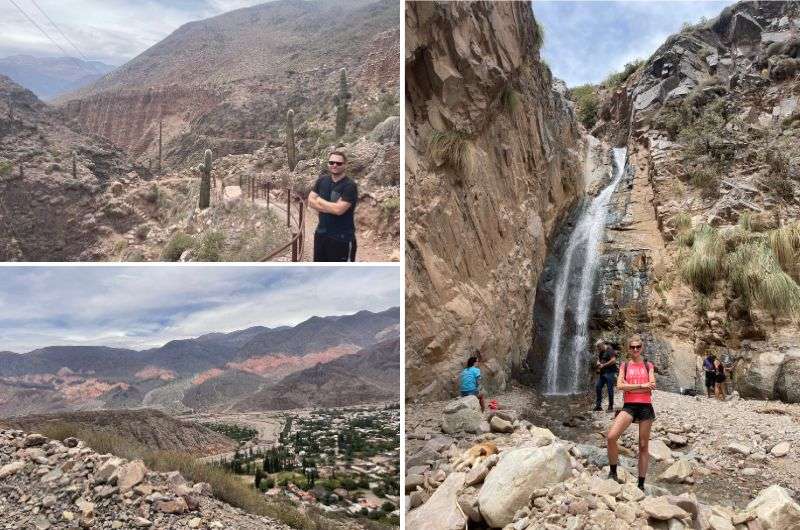
Garganta del Diablo—not much of a waterfall, but the scenery! Magnificent...
The waterfalls are just 6 km (3.7 mi) from Tilcara, so you're there in about half an hour by car. The route is quite the off-road adventure. You're better off in an SUV unless you want to turn it into your final Quebrada de Humahuaca stopover.
Once you arrive at the parking lot, park your ride and trek about 600 m (1,970 ft) to the waterfall. The path is slightly uphill, but nothing too intense. The waterfall... well, it's nice, but I wouldn't exactly call it a waterfall; it's more like a stream. It's worth the short walk, but certainly not worth damaging your car's undercarriage. Generally, the individual spots in northwestern Argentina might not wow you, but the overall landscapes are stunning, turning even a visit to a modest stream into a memorable experience.
Tip: If you want to see REALLY BIG waterfalls, head to Iguazu Falls. Now that’s a waterfall!
- Tickets: ARS 430 (USD 0.50)
Humahuaca town
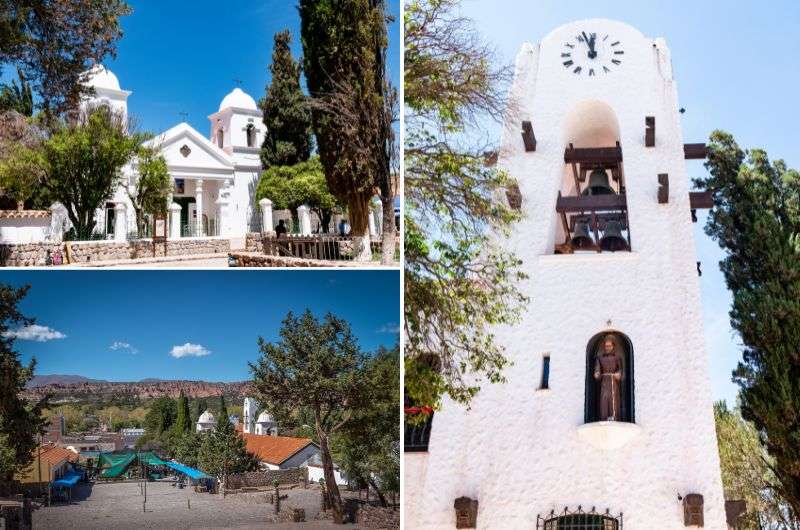
The church in Humahuaca
This small town, with around 11,300 inhabitants, has its share of sights to see. And a huge plus, unlike other places in this area, is that the people here are really nice, or at least that was our experience.
You'll find the oldest building in the region here, a church (the Santa Rosa de Lima) and the Cabildo, close to the square. From the square, you can climb up to the Independence Monument. This area was a crucial spot during the war for independence. Fourteen battles took place here, which, in my opinion, makes the monument well-deserved. Plus, the views from here over the town and surrounding area are divine.
Good to know: Brace yourself, as the town is a popular tourist destination, so it's bustling with tourists during the day. But most travel in groups, so once the afternoon rolls around and they're all herded onto buses and taken away... peace reigns supreme. That's not our case, though, because we decided to stay overnight in the town of Tilcara, which is about a 40-minute drive from Humahuaca town. We chose the Santa Lucia apartment, and I have to say, considering what was on offer, we made a really good choice.
Mirador A la cercanía de los 14 Colores del Hornocal aka Rainbow Mountain in Argentina
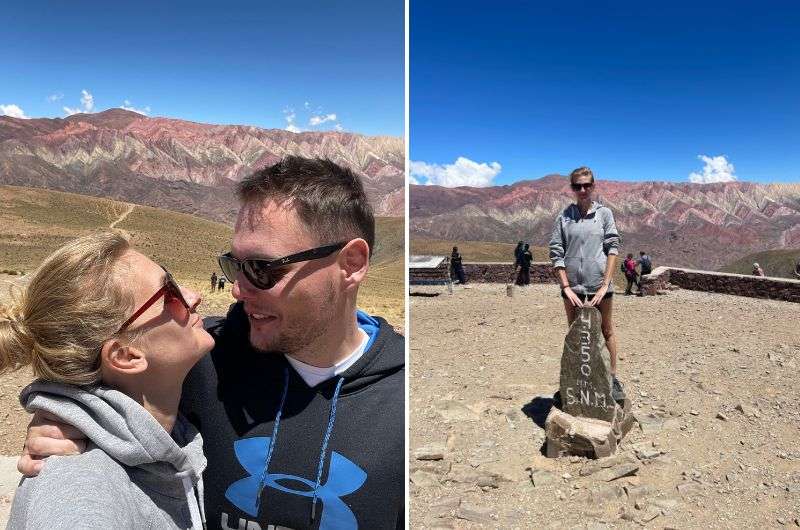
Cerro de los 14 Colores—your Instagram feed will love it!
Remember how I hinted earlier that you should wait until you see the 14 color mountains? Well, the moment has arrived. Expect the journey to the viewpoint to be rocky (but it's a breeze compared to the path to the Garganta del Diablo waterfalls) and to take about 45 minutes to an hour.
On the way, you'll ascend to an altitude of 4,350 m (14,270 ft), where you'll be treated to a magnificent view of this extraordinary colorful mountain. It's reminiscent of Peru's Rainbow Mountain but much larger. The altitude, though... I'm not the best at adapting to high altitudes. This time wasn't too bad, but I still handled it much worse than my girlfriend, who isn't bothered at all. I'm baffled and green with not just nausea, but also envy.
Tip: If you've never had the honor of being at such a brutal altitude, check out "The Big 3 of Altitude Sickness" so you know what you're getting yourself into.
In the Andes, tranquility is usually the norm, and this place is no exception. It's calm, and aside from other cars and tourists, nothing will disturb you. If you'd like to take a walk and challenge yourself at this altitude, there are several options. Several hikes start from the parking lot at the viewpoint. The hikes are beautiful and mostly up to 1 km (0.62 mi). I definitely recommend choosing one in advance because not all kilometers are created equal. On some, you might walk a kilometer but also climb over 700 m (2,300 ft)—an absolute killer.
- Open daily 10 am–6 pm
- Tickets: ARS 800 (USD 1) per car
Cascada Congelada
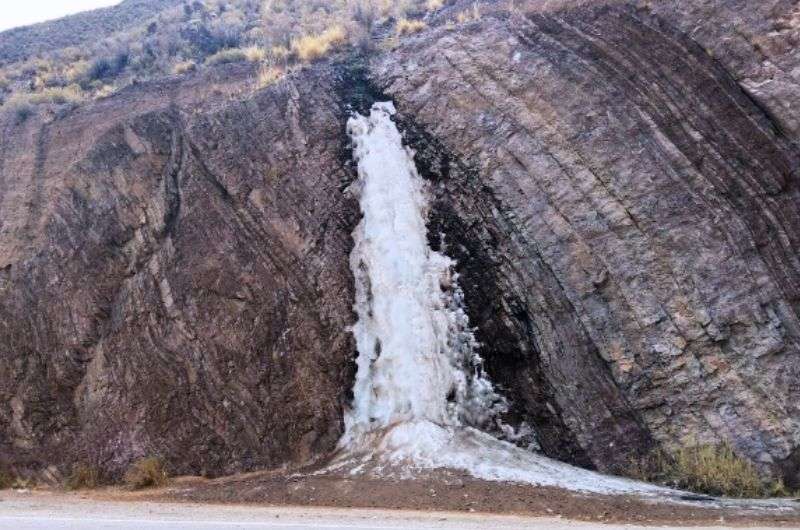
Cascada Congelada—a frozen waterfall
The next stop is the frozen waterfall. It's right by the road, so definitely make a stop there because it's a natural phenomenon you won't just see anywhere. But beware! The more astute among you have probably realized by now... the waterfall is only worth visiting in winter. Otherwise, you might find it dried up.
Inca Cueva
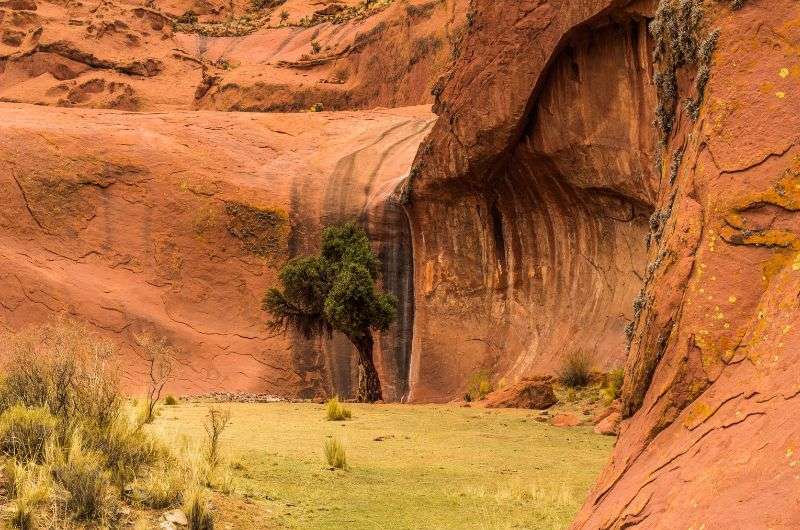
Inca Cueva is very interesting. I recommend taking a guide who will tell you all the historical context
Inca Cueva is a cave with prehistoric paintings dating back to the Inca Empire period, and some are even from modern times (yep, vandals have made their mark here too). The hike to the cave is about 3 km and the terrain is not challenging. However, it's located at an altitude of around 4,000 m (13,100 ft), so beware of altitude sickness creeping back in.
Right at the start, you'll need to cross a small river, go through a tunnel, and then walk along the river. The trail isn't always clearly marked. Once you reach your guide, you know you haven't lost your way. The guide costs ARS 2,000 (USD 2.30) per person, and the cave tour with explanations takes about an hour to an hour and a half. The guides are also local caretakers living a few meters from the cave and looking after it, so the entrance fee goes to them. The tour is definitely worth it because the guide provides lots of interesting information. Without it, you'd just be looking at some drawings.
- Open daily 8 am–6 pm
- Tickets with guide: ARS 2,000 (USD 2.30)
Gigantes Dormidos
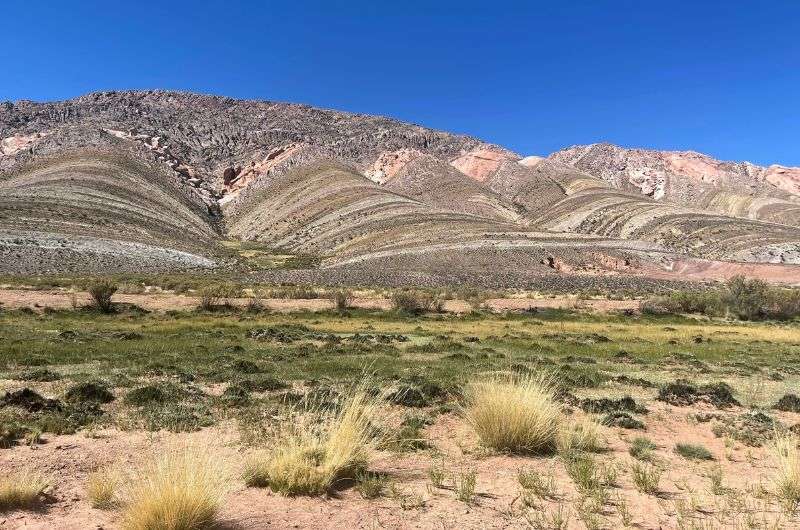
The Sleeping Giants
Gigantes Dormidos, or the Sleeping Giants, are stunning giant rock formations located at an altitude of 3,669 m (12,000 ft). Even though I've marked their exact location on the map, you don't need to drive all the way to them. They can be beautifully seen from National Route 9, which you'll be driving on. Besides, there isn't much to do right at the formations, but the view of them is breathtaking. Once again, they display a play of colors.
Now, let's dive a bit deeper into FAQs and details on how to visit Quebrada de Humahuaca:
2. What is Quebrada de Humahuaca?
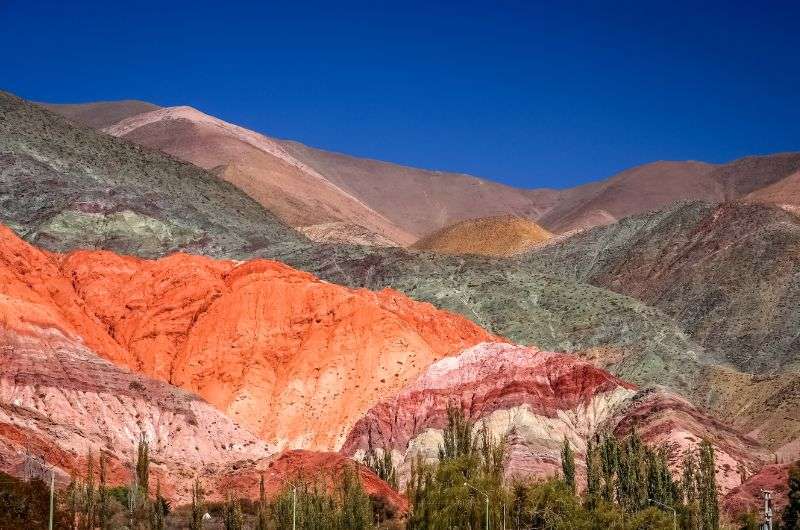
Quebrada de Humahuaca is a mountain valley with a rich history
Quebrada de Humahuaca is a mountain valley located in the northwest of Argentina. This valley stretches about 155 km (96 mi) long, snaking from north to south along National Route 9. The area showcases breathtaking landscapes and is home to many indigenous people who have lived here for thousands of years.
Perhaps even more fascinating than what Quebrada de Humahuaca is now is its past. The valley served as a crucial trade route for at least 10,000 years. Seriously, no joke. Archaeological findings confirm that the first hunters and gatherers who settled this area traversed here. During the Inca era (15th–16th century), this region was part of the trade route known as Camino Inca. Quebrada de Humahuaca also played a significant role in the 19th and 20th centuries during Argentina's battles for independence. Today, it's no longer the case; now, it's primarily an essential route for tourists and locals.
3. Where is Quebrada de Humahuaca located?
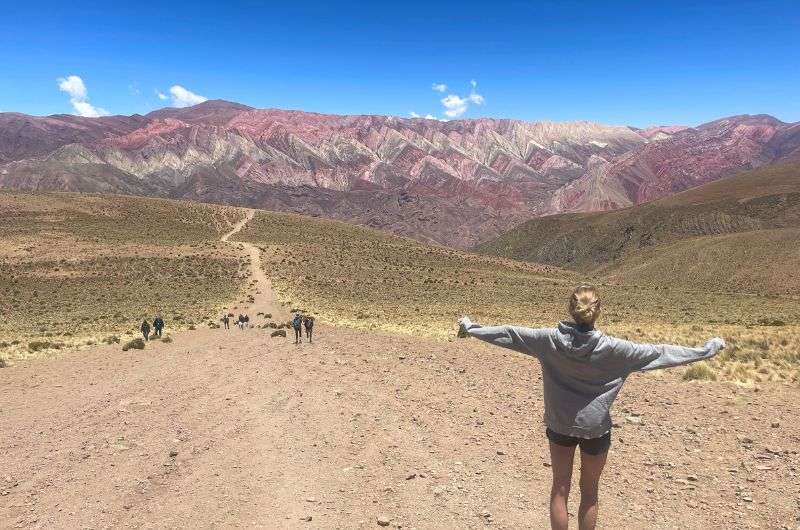
When you reach Cerro de los Siete Colores, you will be amazed!
Quebrada de Humahuaca is, unsurprisingly, located in Argentina, specifically in the northwestern part of the country in the Jujuy province. As mentioned, the valley extends from north to south, spanning 155 km (96 mi). So, while the northern part sits at an altitude of up to 3,000 m (9,800 ft), the southern end is at a mere 1,260 m (4,130 ft).
Quebrada de Humahuaca is about 1,650 km (1,025 mi) north of Argentina's capital, Buenos Aires. It's roughly 154 km (96 mi) from the city of San Salvador de Jujuy, making it a starting point for tourists heading to Quebrada de Humahuaca (us included). But the entire drive up to Cerro de los Siete Colores (The Hill of Seven Colors) is downright epic. Make sure to allocate plenty of time for the journey.
Tip: Quebrada de Humahuaca isn't the only place worth visiting from San Salvador de Jujuy. Check out my article on 11 Amazing Things to Do and See in Jujuy and Salta.
4. When to visit Quebrada de Humahuaca?
Although you can visit Quebrada de Humahuaca year-round, I personally recommend going between May and August. The temperatures are cooler, so you won't get cooked during the day, and there's a lesser chance of rain. Plus, you'll most likely get to see the frozen waterfall—Cascada Congelada—in all its glory.
5. How to get to Quebrada de Humahuaca?
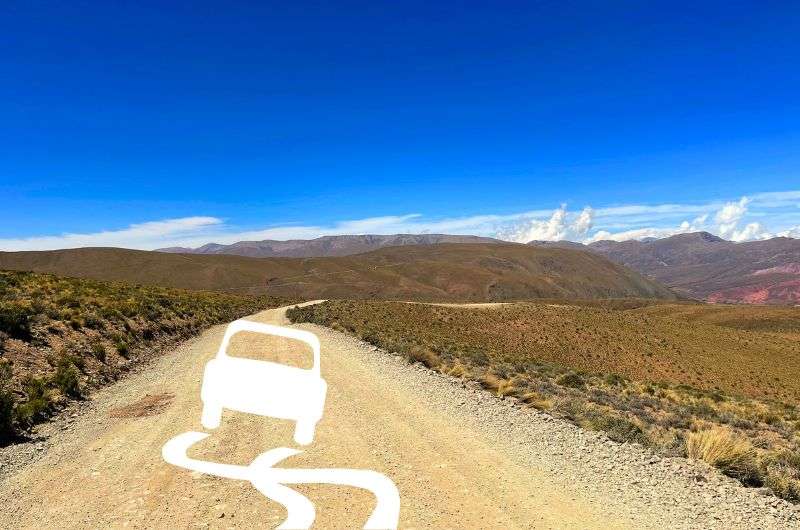
If you know me, you know that when I travel, I always prefer to move around by car
The best way to reach Quebrada de Humahuaca is by car from San Salvador de Jujuy or Salta. Both cities have airports, so you can fly in, rent a car locally, and hit Route 9. The drive takes about 2.5 hours from San Salvador de Jujuy or 4 hours from Salta.
Of course, you could take a bus or join a tour. As you well know, I don't really recommend that since I'm not a big fan of organized tours. So, as usual, I'd suggest going on your own. There's nothing to worry about; you'll be on Route 9 pretty much the whole way.
6. How to get to Quebrada de Humahuaca from Buenos Aires?
The simplest way to get to Quebrada de Humahuaca from Buenos Aires is by flying. It's best to fly to San Salvador de Jujuy, which takes about 2.5 hours. Then, rent a car in San Salvador and set off. In 2.5 hours, you'll arrive at Quebrada de Humahuaca. Boarding in Argentina is quick, so theoretically, you could be marveling at this beauty in just 6 hours.
7. How long does it take to visit Quebrada de Humahuaca?
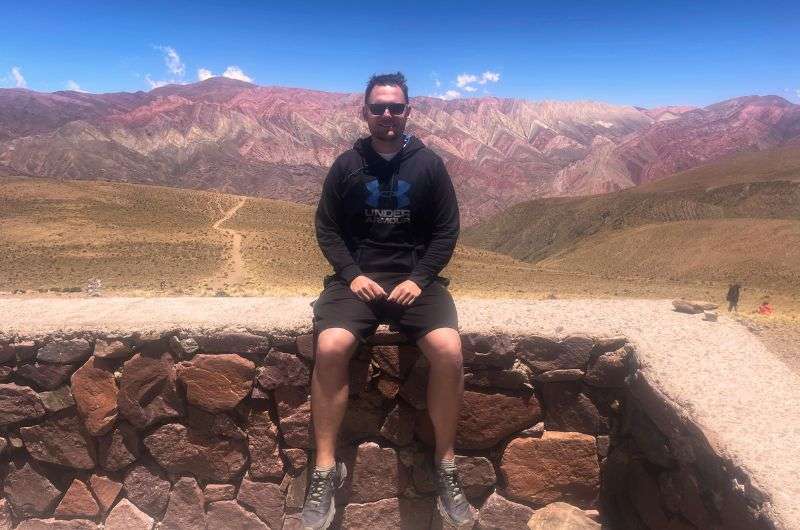
Quebrada de Humahuaca has many beautiful places. Plan at least 2 days!
I recommend spending 2 to 3 days in Quebrada de Humahuaca. This way, you'll have enough time to explore all its beautiful spots, and trust me, there are plenty. Plus, it gives you more time to soak in the local atmosphere and delve deeper into how the locals live.
But, of course, it depends on how thoroughly you want to get to know the place. If you're short on time, you could trim it down to a day trip. That means heading out from Salta or San Salvador de Jujuy and returning in the evening. I wouldn't really recommend this option, though. The journey is long, so it'd more or less be a driving tour with occasional photo stops. I think Quebrada de Humahuaca deserves more attention.
8. Where to stay in Quebrada de Humahuaca?
If I were you, I'd make my base in Tilcara while visiting Quebrada de Humahuaca. It's somewhat the most agreeable place there. You'll find a few restaurants to grab a bite... Yes, don't expect anything beyond that. Generally, Argentina has pretty terrible restaurants, so don't anticipate a gourmet experience here.
For accommodation, I can recommend Santa Lucia apartment. Located right in the center, it's nicely furnished and partly glazed. The design is "à la local culture," but unlike other lodgings, it doesn't make you want to puke; instead, it feels cozy and welcoming. The staff at the reception speaks English well, which is a big plus. And the place is finely tuned down to the last detail. They even have fresh herbs in the garden for cooking, which we didn't use, but I find it a nice touch.
9. What is the climate in Humahuaca?
Quebrada de Humahuaca experiences a dry climate, characterized by two distinct seasons. Summer, from December to March, is marked by occasional storms and rainfall. Then there's winter, which spans most of the year, defined by its dry period. However, summer here isn't your typical summer. Given the high altitude, around 3,000 m (9,840 ft), mornings can be quite cold. Even during summer, morning frosts can occur. Afternoons, on the other hand, are consistently similar throughout the year—it's either hot or scorchingly hot.
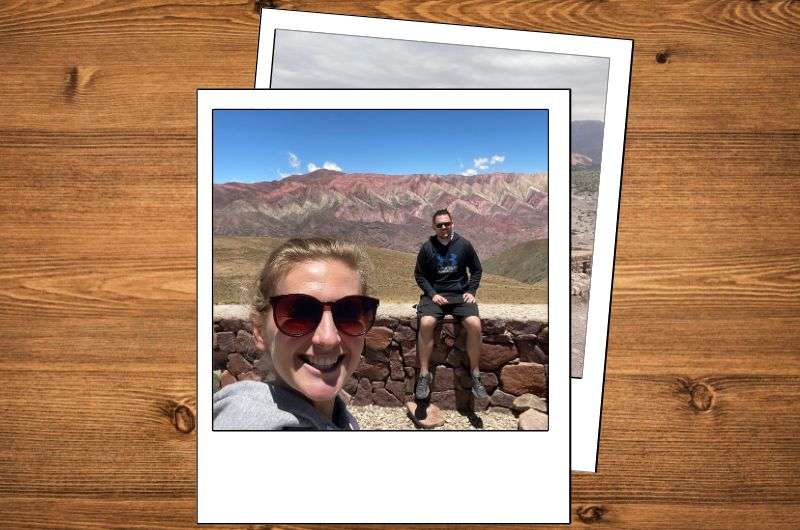
We will never forget this experience. I say go for it!
This post contains affiliate links. I earn a small commission if you make bookings through my links, at no additional cost to you. Thank you for your support!
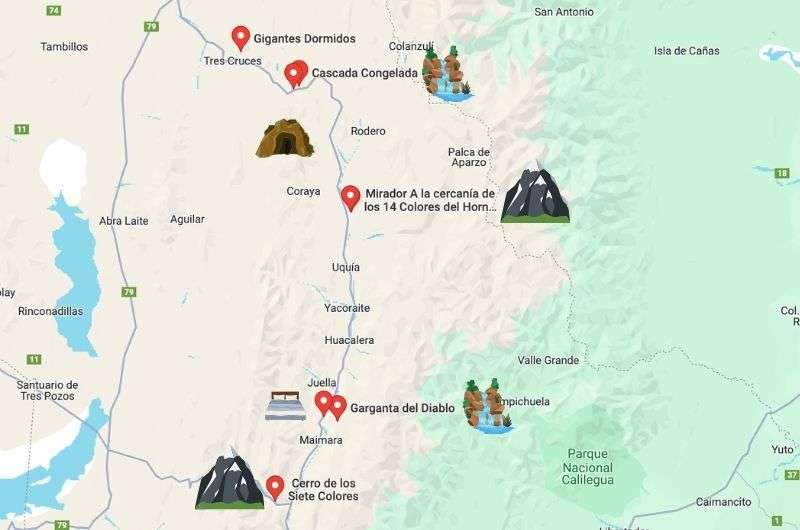

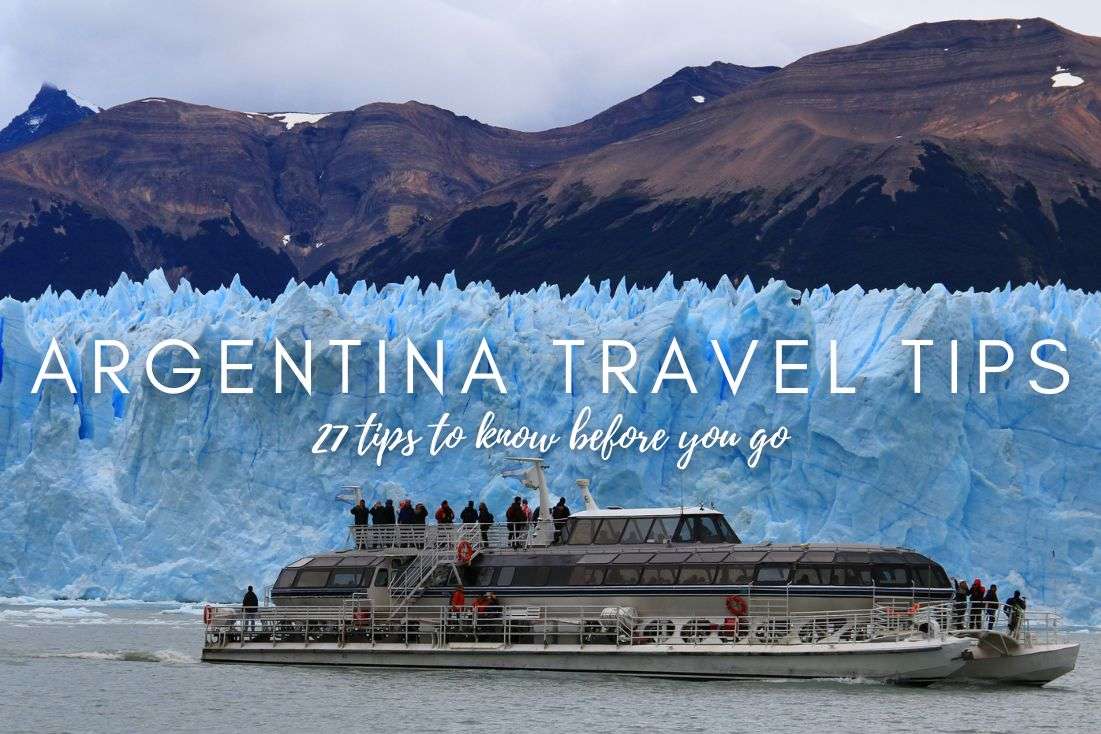
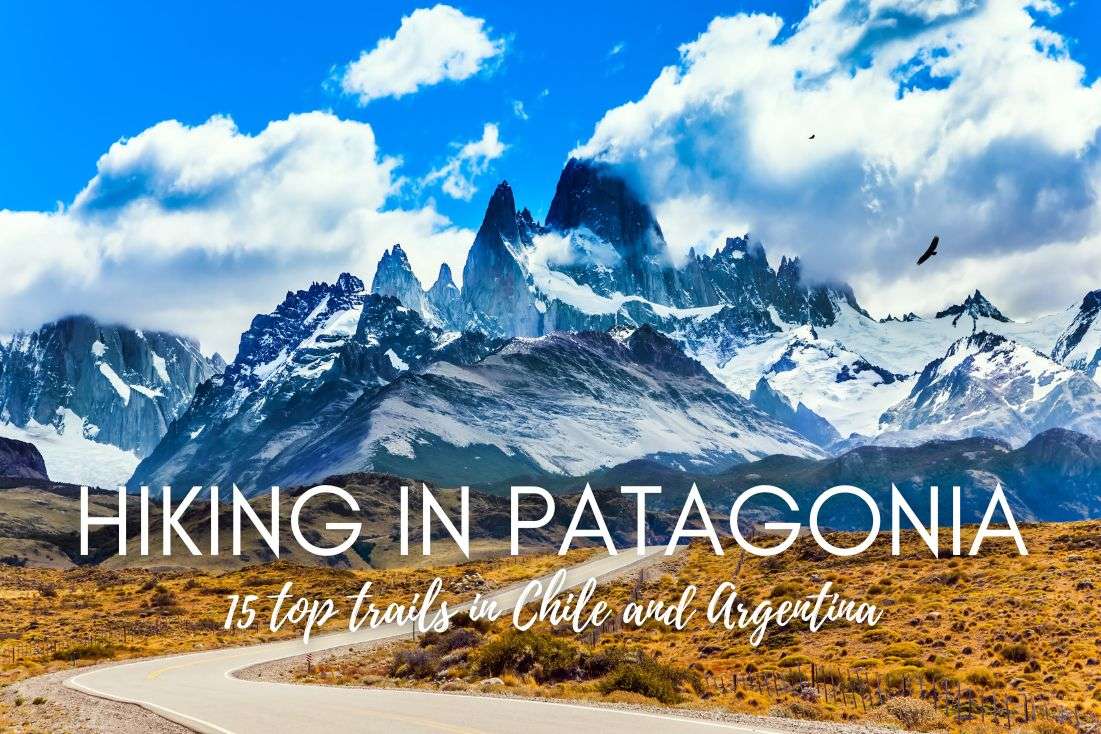




Comments
Thoughts? Give us a shout!